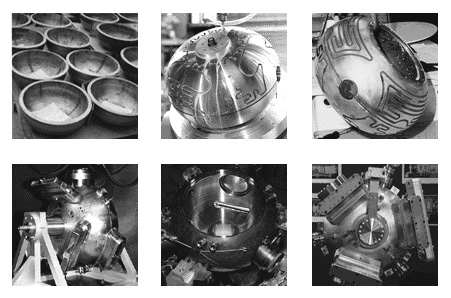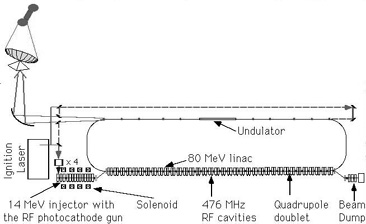

In the IFRA design, electrons are accelerated in the front stretch of a 100-meter long racetrack. As the electron bunches enter the undulator magnets in the backstretch, their density is modulated to the desired radiation wavelength of 840 nanometers, tuning powerful coherent synchrotron radiation which is sent to a giant mirror and beamed into space.
A small fraction of the laser light is reflected back and serves to "seed" the density modulation of the next electron bunch. Another fraction, shifted to the ultraviolet, is used in an electron gun to create new bunches of electrons. (diagram.jpeg)

The 476-megahertz radio-frequency, high-accelerating-gradient cavities of the IFRA laser will be similar to these, designed at Berkeley Lab and built at Livermore for the B-Factory at SLAC. Sophisticated cooling channels are embedded in their copper shells.
The cavities absorb beam-induced electromagnetic fields for a clean interaction of the beam with the accelerating field. Photos courtesy of Lawrence Livermore National Laboratory (cavities.jpeg)